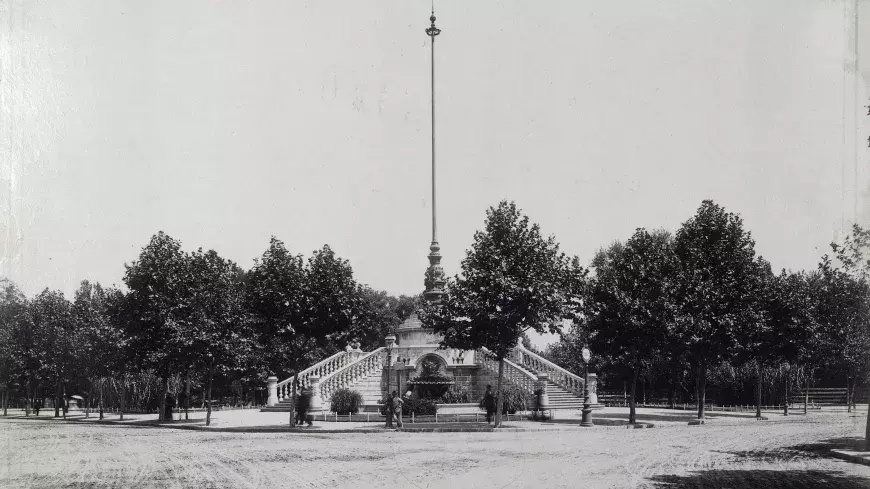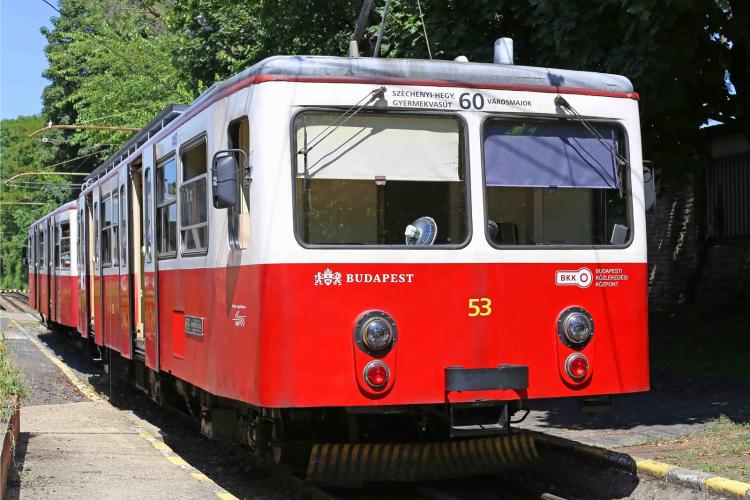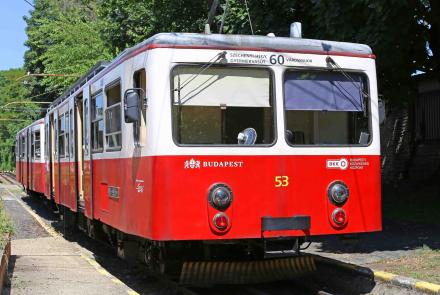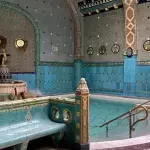Time Travel on Tracks: A Trip to 19th Century Budapest on the Cogwheel
Heroes' Square just at the entrance of City Park is one of Budapest's most recognizable and most visited landmarks. But did you know that for a brief period another stunning piece of architecture stood on its location?
In the late 19th century, Budapest underwent significant urban development, particularly along Andrássy Avenue, which was completed in 1885, when the last lot along the road was built in. This grand boulevard connected the city center to City Park (Városliget) and was designed to showcase the city's burgeoning elegance and modernity. At the terminus of Andrássy Avenue, a remarkable structure known as the Gloriette was erected in 1884, serving both functional and aesthetic purposes.
What was the Gloriette?
The impetus for constructing the Gloriette stemmed from the discovery of thermal water sources in the area. Engineer Vilmos Zsigmondy had been conducting deep drilling operations near City Park in search of these thermal springs. To conceal the drilling equipment and enhance the visual appeal of the site, the city commissioned the esteemed architect Miklós Ybl to design a decorative pavilion.
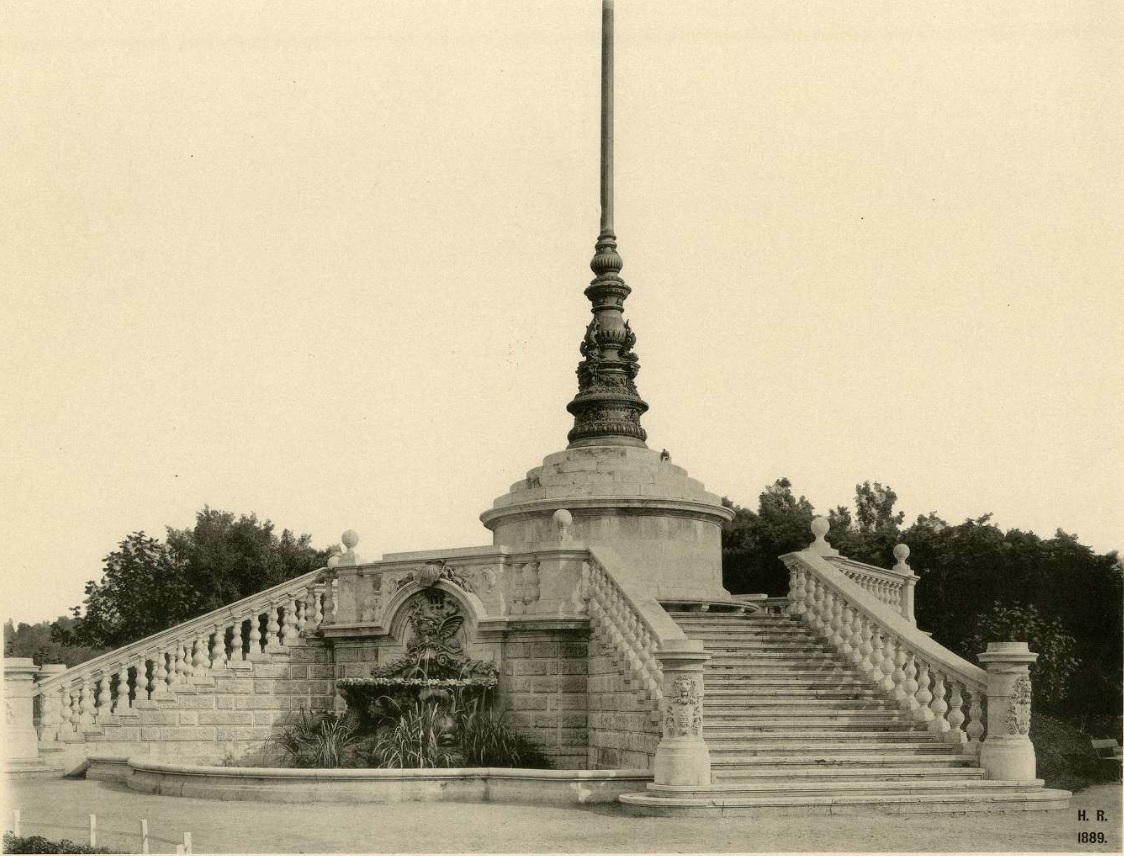
The Gloriette in 1889. Photo by Rückwardt, Hermann Oskar (1845-1919)
Ybl, renowned for his contributions to Hungarian architecture, envisioned a structure that would seamlessly blend utility with artistic elegance. His Neo-Renaissance style shaped Budapest’s iconic look, with many of his buildings still in use today. These include the Hungarian State Opera House, St. Stephen’s Basilica (Ybl took over after previous architect Hild; designed parts in Neo-Renaissance style), the Castle Garden Bazaar, the elegant arcades and terraces at Buda Castle, now a cultural venue, the Festetics Palace, an aristocratic residence, now the home of Andrássy University or the now demolished Margaret Bath on Margaret Island.
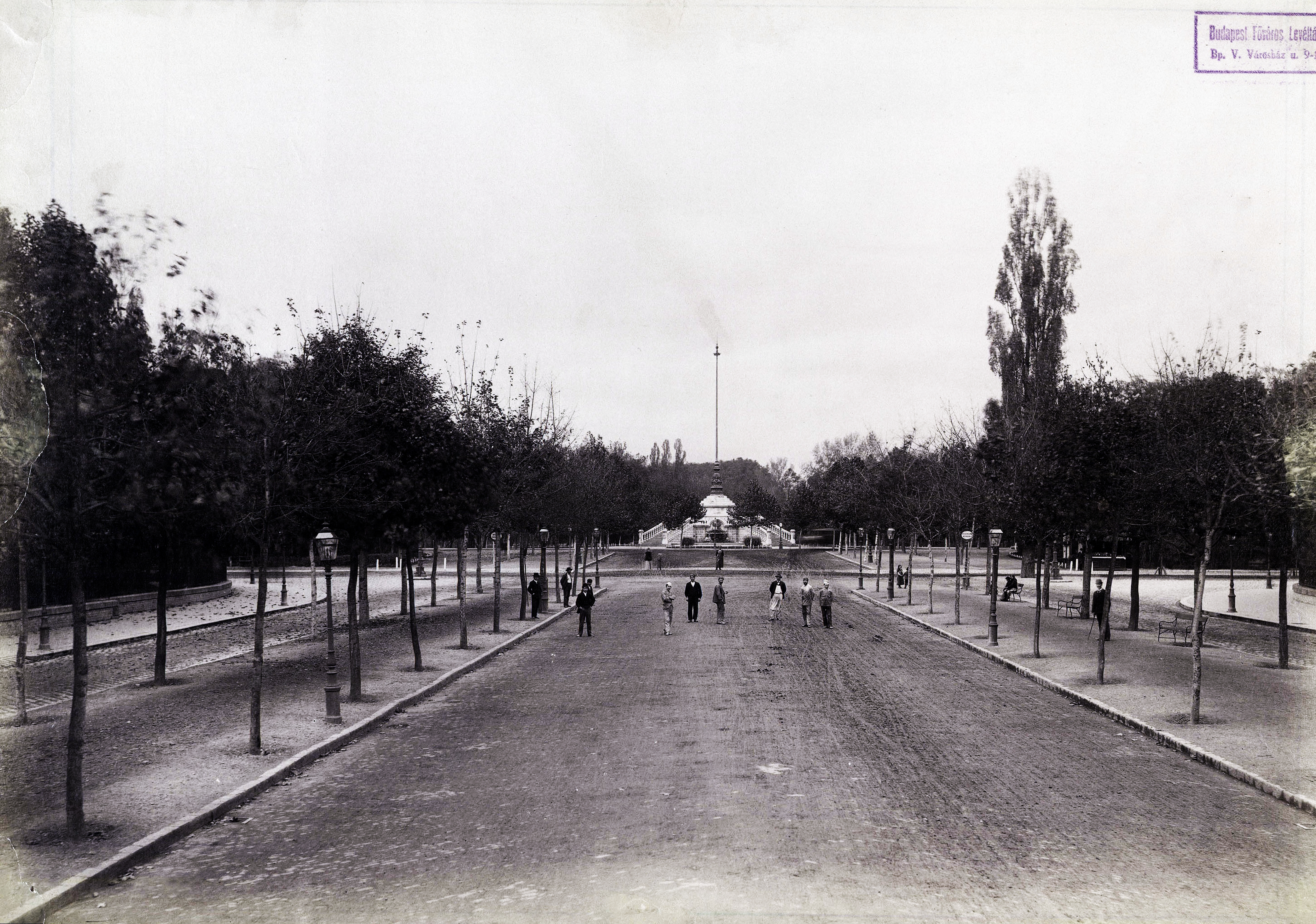
The Gloriette stood at the very-end of Andrássy Avenue
Photo credit: Fortepan / Budapest Főváros Levéltára / Klösz György fényképei
Completed in 1884, the Gloriette stood as an octagonal terrace elevated approximately 2.5 meters above ground level. Two wide staircases adorned with balustrades led visitors to the terrace, with the initial cylindrical pillars of the staircases featuring Budapest's lion-emblazoned coat of arms. At the center of the terrace, a cylindrical well-house was constructed to enclose the thermal spring apparatus. Rising from this central structure was a 24-meter-high cast iron flagpole, which quickly became a distinctive landmark at the end of Andrássy Avenue. The flagpole was colloquially referred to as the "toothpick" by locals. Additionally, a mascaron-adorned water spout directed thermal water into a small basin, allowing visitors to sample the curative waters.
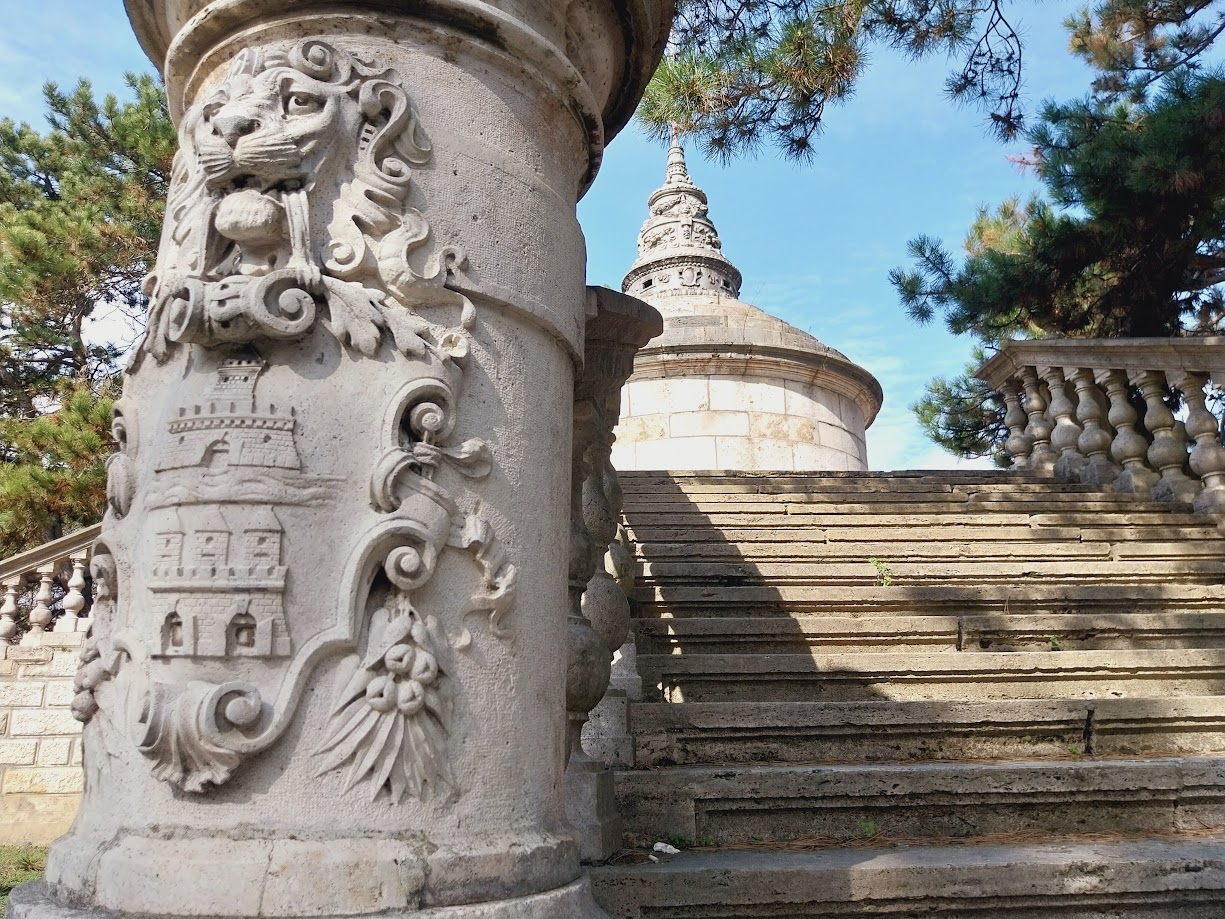
Coat of Arms of the city at the foot of the monument
For over a decade, the Gloriette served as both a functional well-house and an ornamental feature, symbolizing Budapest's commitment to integrating practical infrastructure within aesthetically pleasing designs. Its prominent position at the junction of Andrássy Avenue and City Park made it a popular gathering spot for residents and visitors alike, offering a place to appreciate the therapeutic waters and the surrounding landscape.
In 1895, as Hungary prepared to celebrate its millennial anniversary, plans were made to construct a National Pantheon—the Millennium Monument—on the site of the Gloriette. This decision led to the disnmantling of the Gloriette. In 1897, the Svábhegy Association initiated the transfer and reconstruction of the monument to Széchenyi Hill (Széchenyi-hegy), where in 1898 it was repurposed as a monument honoring István Széchenyi, a pivotal figure in Hungarian history.
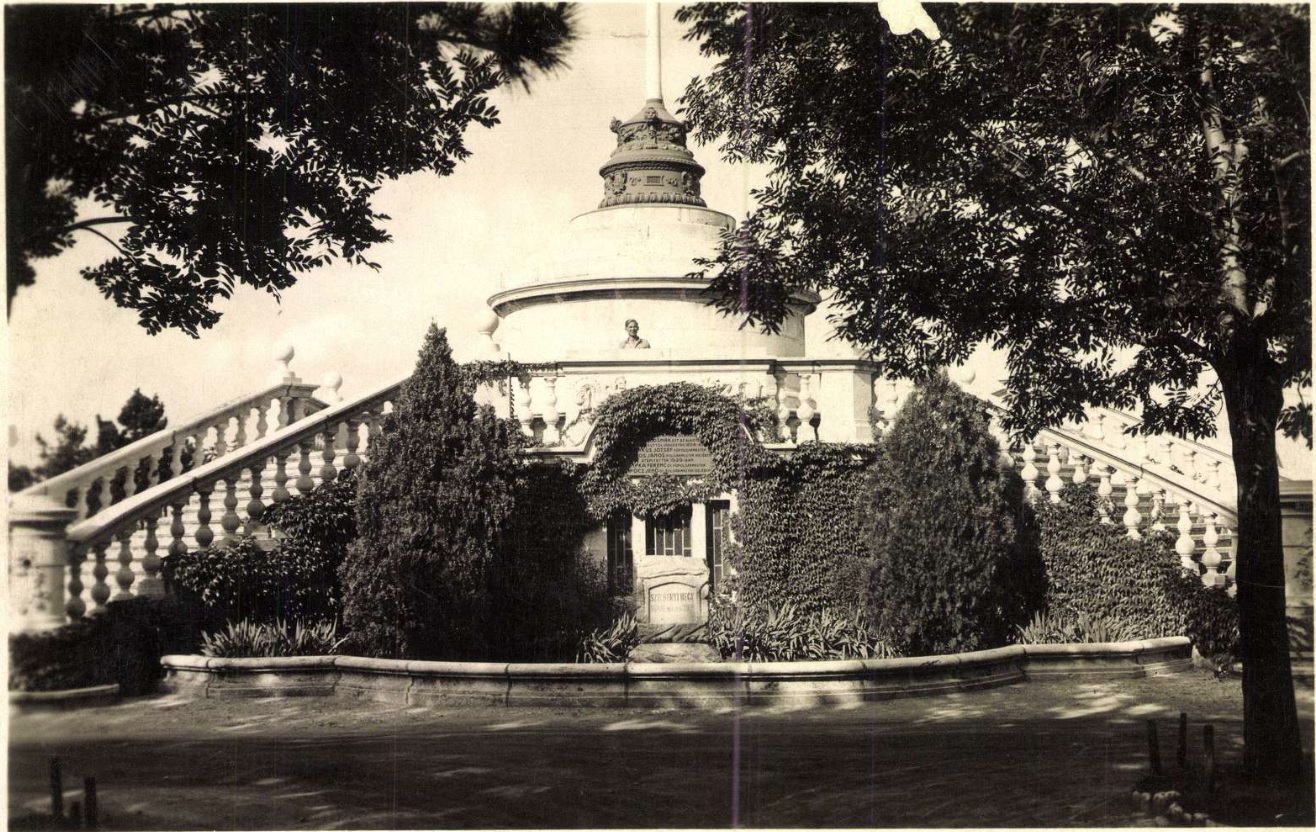
Postcard of the Gloriette, repurposed as a lookout tower in the 1930
Széchenyi Hill, accessible via the Budapest Cogwheel Railway (Fogaskerekű), offers visitors a unique journey through the scenic Buda hills. Established in 1874, this historic railway connects Városmajor Park to Széchenyi Hill, ascending to an elevation that exceeds the height of the Eiffel Tower. The railway's distinctive design features a third rail of evenly spaced metal cogs, enabling it to navigate steep inclines effectively. The Cogwheel Railway a.k.a. tram number 60 can be used just as any other mode of transport in the city with a single line ticket. The monument stands just a few minues walk from the terminal station, Széchenyi-hegy.
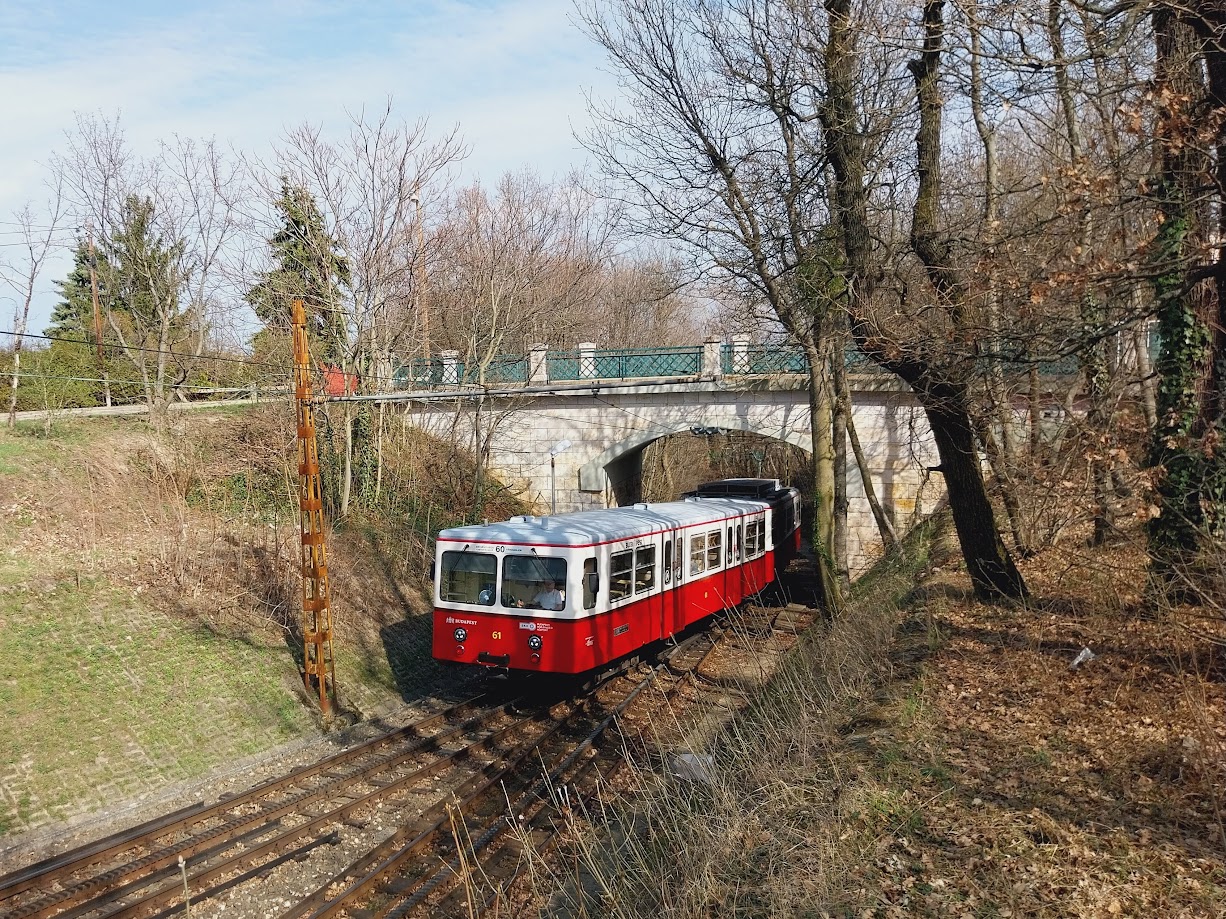
The Cogwheel arriving to Széchenyi Hill station
The Budapest Cogwheel Railway (Fogaskerekű Vasút) is a unique and historic form of transportation that has been carrying passengers up the Buda Hills since 1874. Originally steam-powered, this rack railway was electrified in 1929, making it one of the earliest electrified cog railways in Europe. Unlike traditional trains, it uses a special toothed rail system that allows it to climb steep inclines—perfect for navigating the hilly terrain of Budapest’s Svábhegy and Széchenyi Hill areas. Today, tram line 60 is integrated into Budapest’s public transport system.
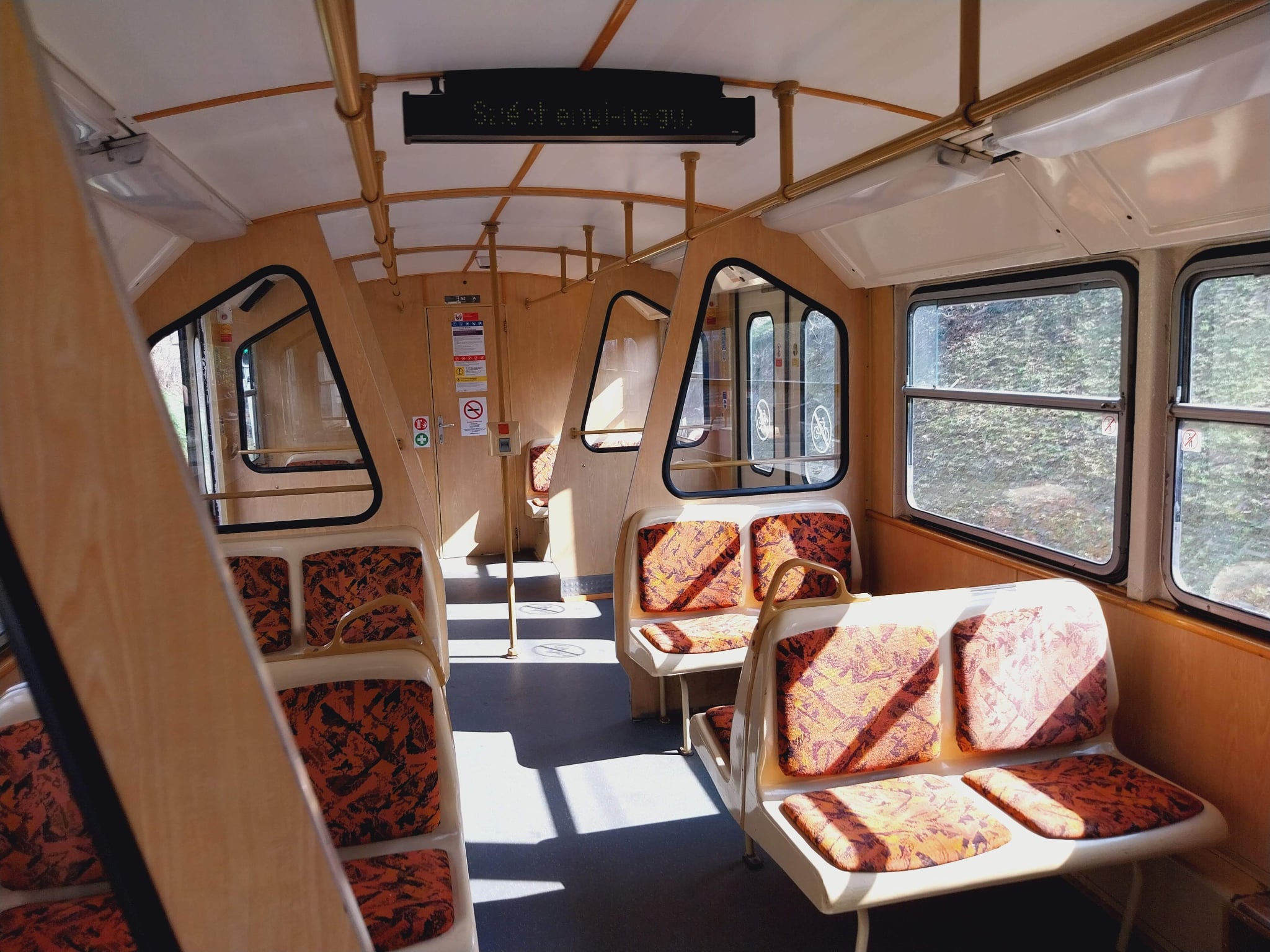
The old-timey Interior of the Cogwheel Railway
A visit to the Széchenyi Monument via the Cogwheel Railway provides not only a historical exploration but also an opportunity to experience Budapest's natural beauty. The journey offers panoramic views of the city and serves as a gateway to various hiking trails in the area. The hill itself was named after famous statesman István Széchenyi in the year of his death in 1860.
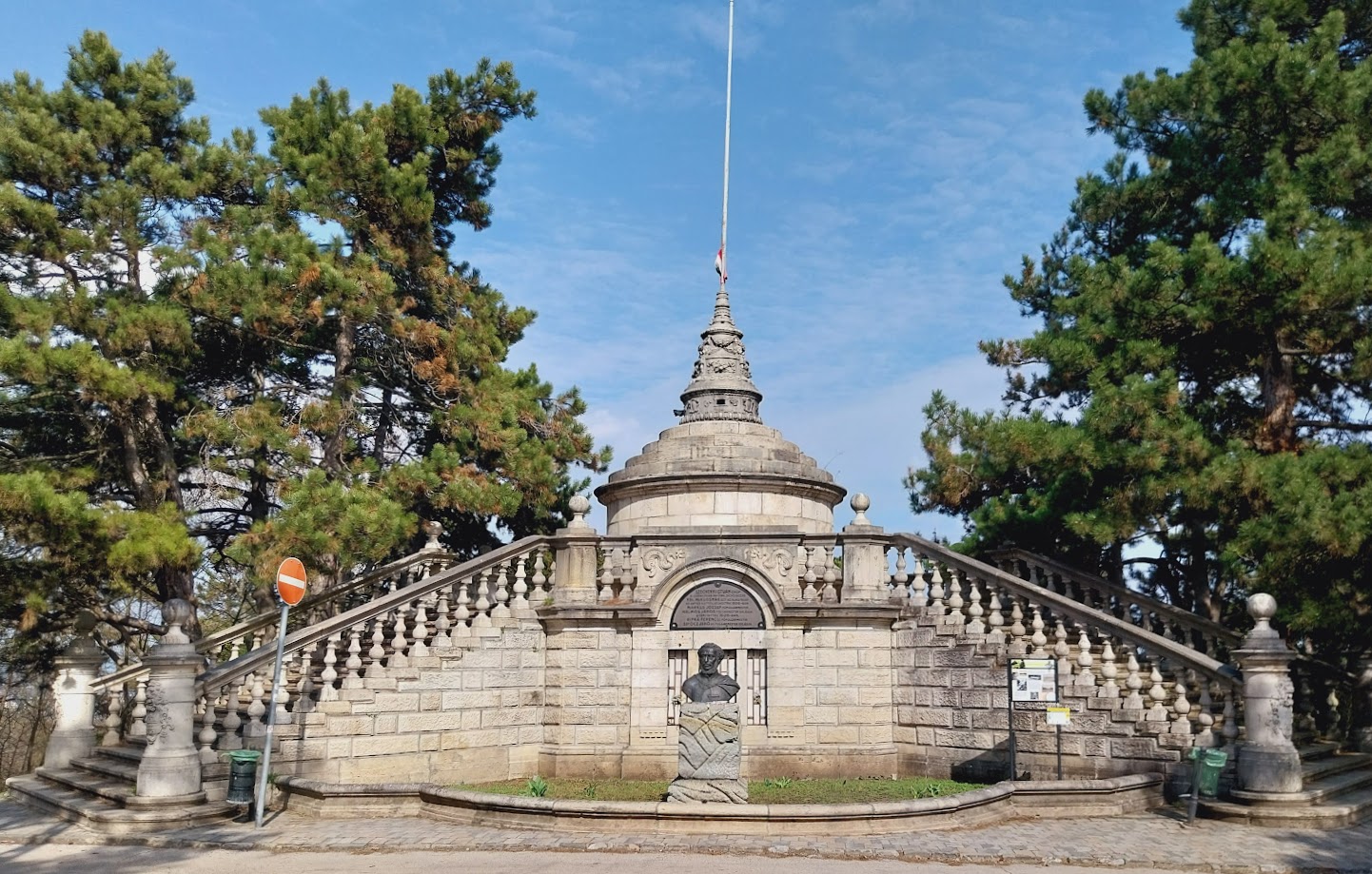
The Lookout as it stands today
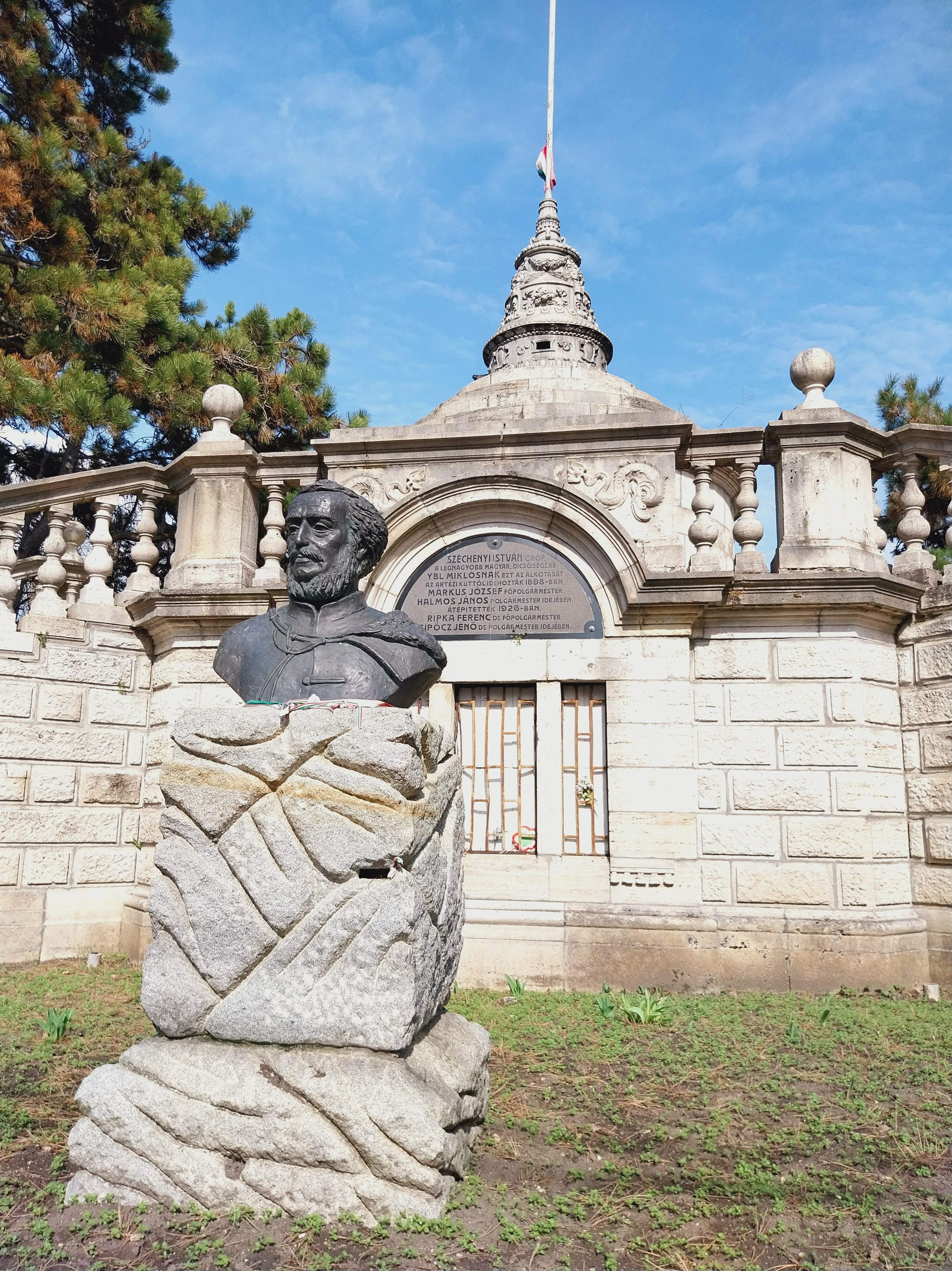
This combination of cultural heritage and natural splendor makes it a compelling excursion for both locals and tourists.
Cover photo credit: Fortepan / Budapest Főváros Levéltára / Klösz György fényképei
